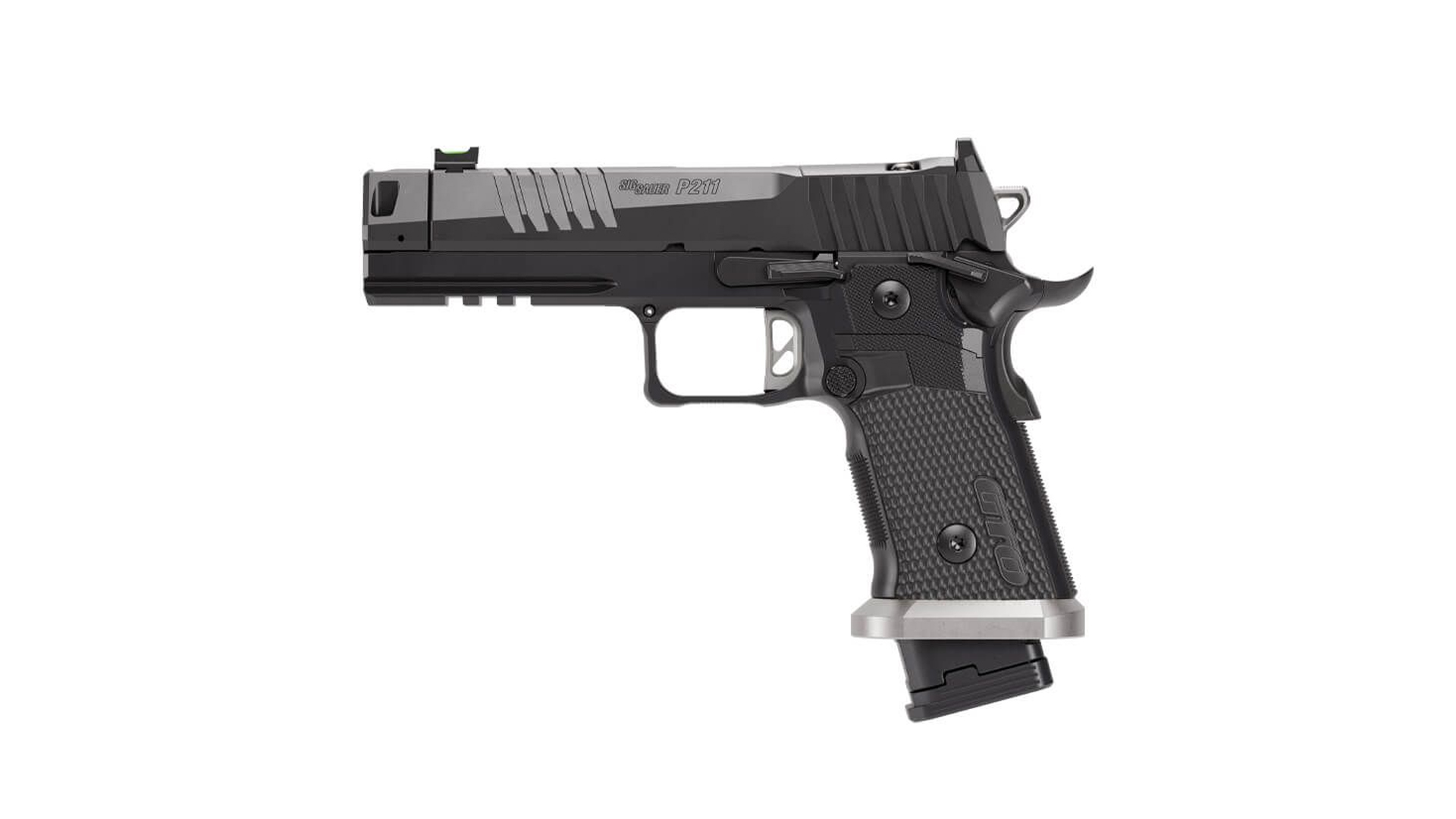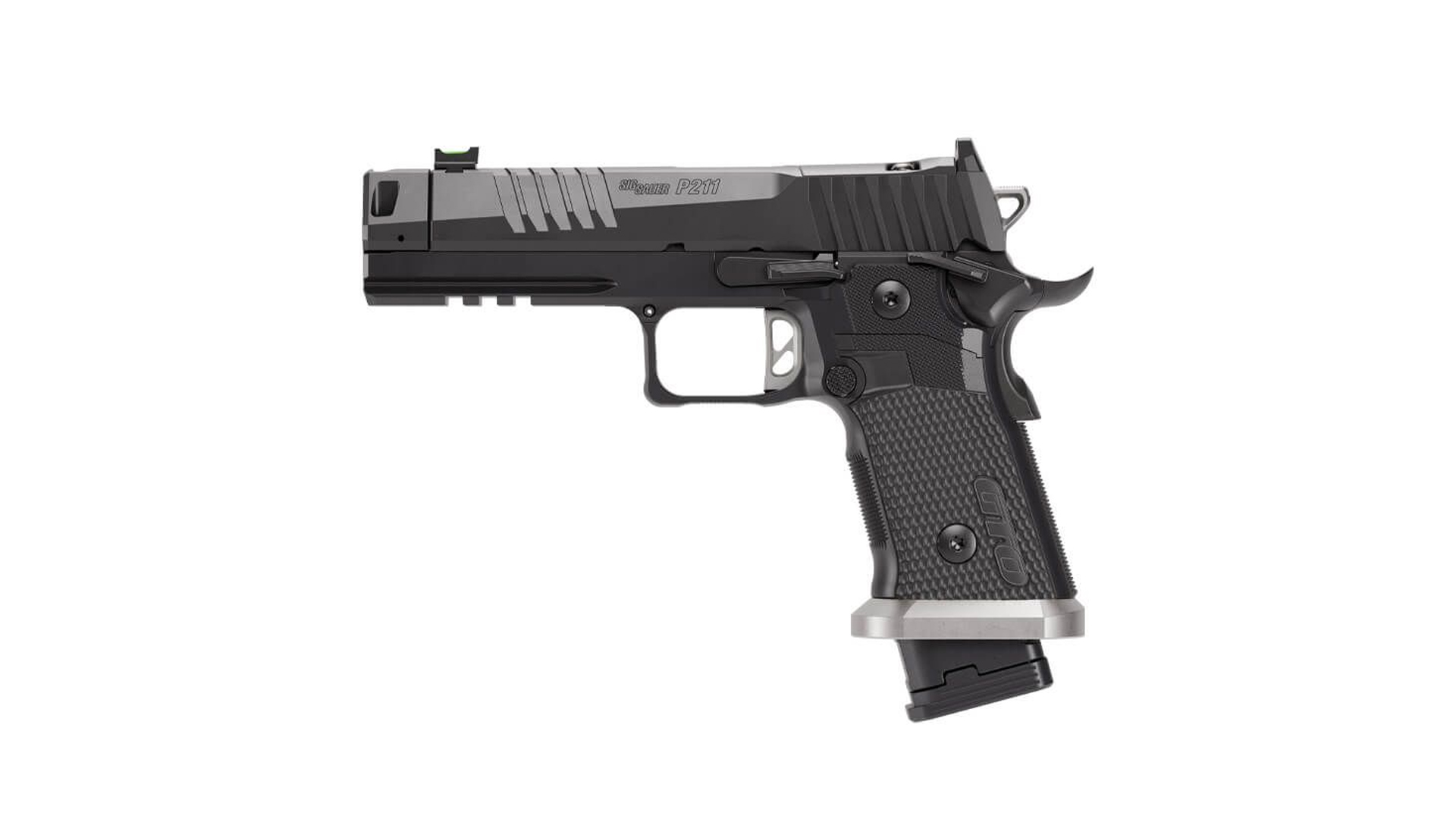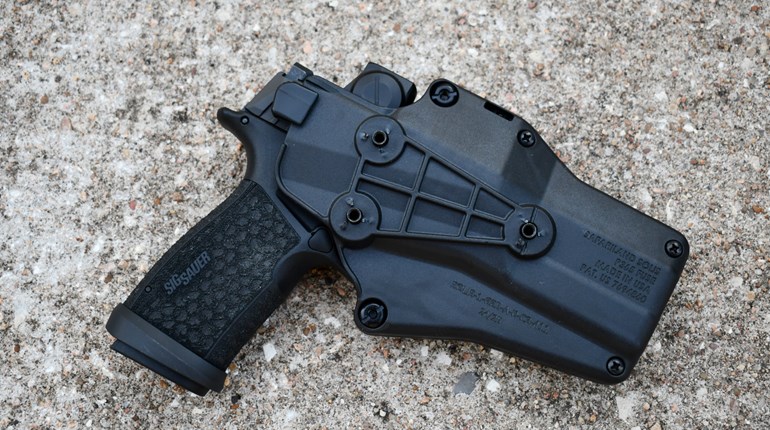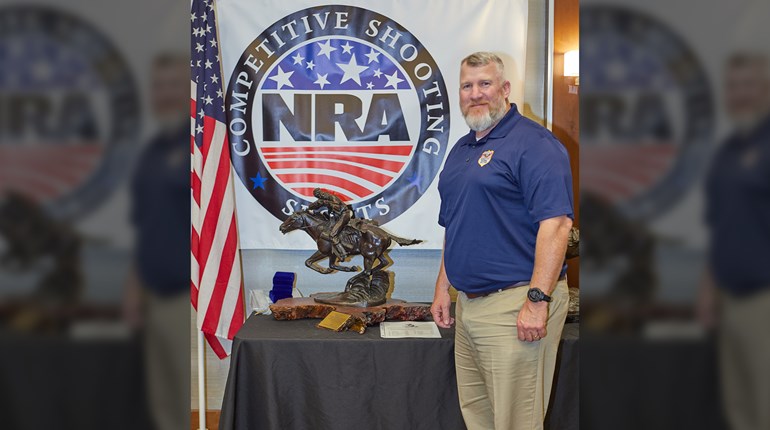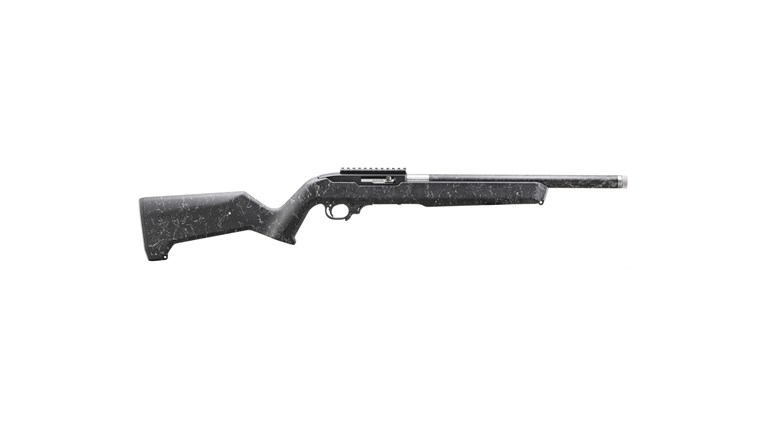
In 2011, Ruger, acknowledging America’s love for John Browning’s 1911, introduced one under their own label. The SR1911 was true to the Browning design; not adding a lot of “custom” stuff, but just making the few corrections that were needed. I tested one of the first and it was a solid and reliable pistol, although a few things would be needed to make it match ready.
In 2017, Ruger introduced a match ready version. The SR1911 Target (#6736, $1,019) is a full-sized, five-inch barrel 1911 in John Browning’s classic design and chambered for the .45 ACP. The slide and frame are constructed from stainless steel with a low-glare satin finish. The empty weight is 39 ounces.

The slide is a round top, flat-side design with rear cocking serrations. It features an oversize ejection port. The front strap is smooth, the dust cover is clean, and the trigger guard is not undercut. The stainless plunger tube is integral, not staked, and unlikely to shoot loose.
The barrel and barrel bushing are also stainless steel. Ruger notes they are machined from the same bar stock, on the same CNC machine, to improve consistency and accuracy. The barrel is the traditional .45 ACP 1:16 right-hand twist with a loaded chamber indicator cut out on the upper rear.

The grip safety is blued steel and features a pronounced “speed bump,” with the proper cut-out for the lightweight, skeletonized, round spur hammer. The mainspring housing is a flat checkered model in blued steel. Operating controls, also blued steel, consist of ambidextrous “combat-style” thumb safeties with a left side extended magazine release and slide stop.
The operating system is the preferred 70 Series action with a titanium firing pin. The trigger is a lightweight, three-hole aluminum model. The trigger face features pronounced serrations, with an adjustable trigger over-travel screw. The trigger on my test gun broke at a consistent four-lbs. 10-oz. on my Lyman Digital Trigger Pull Gauge. There was a slight (about 1/32-inch) amount of take up, followed by a crisp, creep-free break, and no detectable over travel.

The sights are dovetailed into the slide and consist of a Bomar-style rear, with a plain black blade, and a metal front, non-serrated, ramp. It’s also plain black, but on the range it appeared to my eyes as a “lighter” shade of black and offered a bit of contrast to the rear. Shooters who prefer a brighter fiber optic front sight, or an undercut black blade front sight, will have no problem inexpensively replacing it with an aftermarket model given its standard dovetail mounting. The Target .45 accepts all aftermarket parts.
The flat grip panels are checkered G10 and secured with T10 torque screws. The aggressive checkering pattern is on the forward portion of the grips.

The magazine well features the standard classic Browning bevel. Two stainless steel magazines are included. One is a standard flat base seven-round model. The other is an eight-round magazine with an extended base plate that eliminates the “palm pinch” this writer has sometimes experienced when rapidly loading flat-based seven-round mags. For action pistol competition acquiring a few more of the eight-round magazines would be smart.
On The Range
Prior to heading to my range I field stripped and lubricated the gun. It was a straight forward “classic 1911” strip down with no surprises, and a barrel bushing wrench was included with the gun.

The ammunition on hand for this review consisted of Atlanta Arms 230-grain FMJ Select, and Winchester’s Train 230-grain (W4ST) FMJ. These are standard 230-grain loads at about 870 fps, and common range loads. Two of my handloads were also included: the Xtreme 225-grain FMJFN bullet at a 170 PF, and the Speer 230-grain swaged lead RN at a 165 PF. Both have served me well in competition. The last load was the Atlanta Arms 185-grain JHP Elite. This was a relatively new load to me, but proved to be the most accurate of all the above test loads in two other 1911s I tested in recent months. And it certainly was with the Ruger.
The first step was to zero the gun from a 25-yard bench with one of the 230-grain FMJ loads. The windage was dead on, but the groups were about four inches low. The Bomar-style rear sight got it zeroed quickly. That only took a few rounds and the gun wasn’t even close to being “broken in.” Most semi-autos need about 100 or more rounds before all the parts settle in. I borrowed a Blade-Tech 1911 holster from a shooting buddy for this test, so I decided to get some rounds down range from the holster before I did the accuracy tests.
I started with Double Tap drills from 20 yards. The grip checkering profile, with smooth on the rear and aggressive checkering on the front of the G10 panels, allowed a quick and positive grip from the holster, yet provided a secure gripping surface while triggering off the two rounds. The combat-style thumb safeties were the proper size to allow me a quick “swipe off” and then let the thumb continue down to hit a strong grip. I ran about 80 rounds here and rotated the various test loads through this session. The only malfunction that occurred in what ultimately became about a 250-round test occurred on the second Double Tap magazine—when the gun had less than 30 rounds through it—and consisted of a round of the AA 185-grain JHP failing to fully eject. That was the only malfunction experienced.
Additional rounds were run through three target set-ups between seven and 15-yards. The gun handled well, and functioning with all loads was flawless. The black front sight was a bit slow for my “over 40” eyes to pick up, but once found it drilled Down-0 hits on the IDPA targets with monotonous regularity; although if I were shooting this gun in IDPA CDP, or USPSA Single Stack, I would probably put on a 1/10-inch wide fiber optic front sight with a 0.40 rod. With the Bomar-style rear, that would be the ideal set up for me.
Once the gun was broken in, accuracy testing was the final step, and the accuracy chart above shows that the Ruger Target delivers. It’s a solid and reliable gun for the money—ready to compete in many games.



